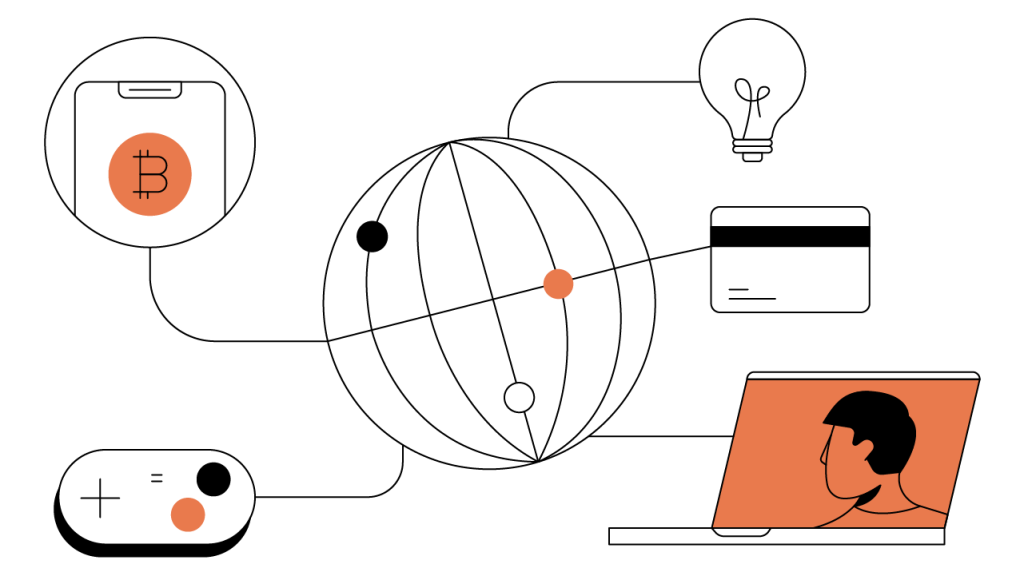Contents
What Is the Internet of Things (IoT)?
The number of devices that connect to the internet far exceeds the number of people that live on the earth. IoT: unprecedented possibilities and a few concerns.

Summary
We’ve entered an era in which physical objects — toasters, vending machines, traffic lights — can be connected to the internet. Benefits to such connectivity include efficiency, convenience, and personalization. The data that this connectivity gathers can provide great value to people, businesses, and cities. However, as this Internet of Things (IoT) becomes more ubiquitous, major concerns related to the security and privacy of these interconnected systems are also more ubiquitous.
What Does IoT Mean?
Internet access is no longer limited to your computer or mobile device; wristwatches, door locks, refrigerators, and more are being fitted with internet connectivity. This network of connected objects and devices transfers data back and forth and feeds new applications for consumers, enterprises, and governments. It has been aptly named the “Internet of Things.”
Once used to refer only to objects equipped with internet connectivity, the Internet of Things has expanded as a category to include a number of technologies that add to the applications of the network, like real-time analytics and . The most well-known example of IoT today is technology, which includes devices such as lights, thermostats, and security systems that are controlled by a homeowner through their smartphone or smart speakers.
Benefits of IoT
There are several purported benefits of IoT technology, including efficiency and convenience. With the ability to operate many objects and devices from one device, IoT connectivity removes some of the manual management they might otherwise require. Instead of managing each smart home item one at a time from the actual appliance, those devices are connected to and controlled through smartphone apps. IoT smart city technology enables the monitoring of air quality, traffic, and other metrics that are useful in understanding how to make cities more efficient. IoT also makes things convenient, like giving you the ability to quickly reorder staple home goods with just a short verbal command.
Personalization is another big advantage of an IoT world. Many applications today — from Spotify to Google to Facebook — use to offer recommendations to users. Connected devices called beacons have the potential to bring this personalized experience into the physical world. For example, since 2014, Macy’s has been using beacons to send discount offers and coupons to customers based on their online shopping history when they open the Macy’s smartphone app in-store.
IoT: From Coca-Cola to 127 Every Second
The core concept behind IoT was prototyped in the early 1980s with a connected Coca-Cola vending machine. The vending machine, which was on the Carnegie Mellon University campus and connected to an early iteration of the internet called , was able to count inventory and determine whether the drinks inside were cold.
In the early ‘90s, experimentation continued with more internet-connected devices, including a toaster, a coffee maker, and a camera. Kevin Ashton, a technology pioneer and entrepreneur, is credited with coming up with the term Internet of Things in the late ‘90s. He was working for Procter & Gamble at the time and was interested in how connected devices could benefit the company’s supply chain.
According to Cisco IBSG, the IoT technically came to be between 2008 and 2009, when the number of internet-connected devices eclipsed the world’s population for the first time. And, the number of connected devices has only increased since. According to McKinsey, in 2017, 127 new devices were connected to the internet every second.
IoT applications are typically divided into five different categories depending on end user and scale: consumer, organizational, industrial, infrastructure, and military.
IoT: Connected Concerns
The pace of IoT adoption is increasing, and the concept of an all-online home or personalized experience in the public realm no longer seems foreign. However, that doesn’t mean there aren’t real concerns about the safety, security, and privacy of this technology network.
All connected objects and devices that make up the IoT are entry points for potential hackers and fraudsters. This vulnerability was on full display in 2016 during the Mirai attacks. During these attacks, hackers scanned IoT devices, trying out default factory passwords. Since many consumers don’t change default passwords, the hackers were able to load malware onto a significant number of devices — mainly home security cameras. The malware directed the devices to send lots of messages to a Domain Name Service (DNS) provider. This , which overloads networks with spam messages making them unavailable, affected not only the DNS provider, but also the websites using its services, including , Reddit, and Twitter.
As more companies enter the IoT space, there is a risk that a company will enter the fray with inadequate security protocols. IoT devices and the devices that connect to and control those devices can be compromised from many sides: the interfaces that connect to the device, the data transfer mechanism, and device updates. Additionally, there’s concern over the user privacy of such devices. Some may have concerns with the amount of data that a device can collect about them simply from being in the home. Moreover, should the security of the devices be compromised, unencrypted and stored user data could be stolen as well. Privacy advocates worry broadly about the improper use of the extreme amounts of customer data that IoT-connected devices will create.
An enhanced focus on how to secure networks and strengthen user privacy while participating in IoT is now at the forefront of IoT discourse. has emerged as a potential solution for bringing a foundational degree of security and privacy to the Internet of Things, with decentralized data storage and privacy mechanisms built into the functionality of many networks. This synergy may provide a boon to both sectors, while safeguarding society from data breaches and surveillance as this foundational new technology continues to evolve.

Author
Is this article helpful?
